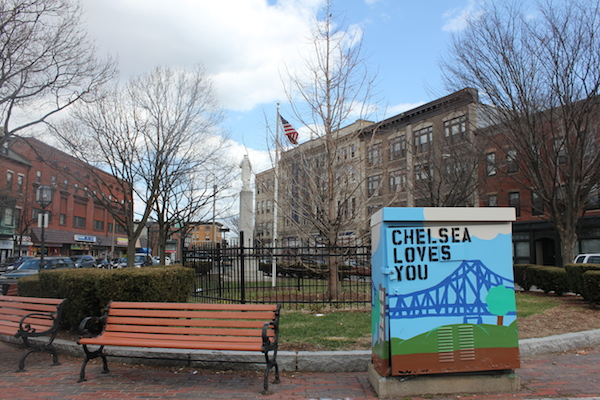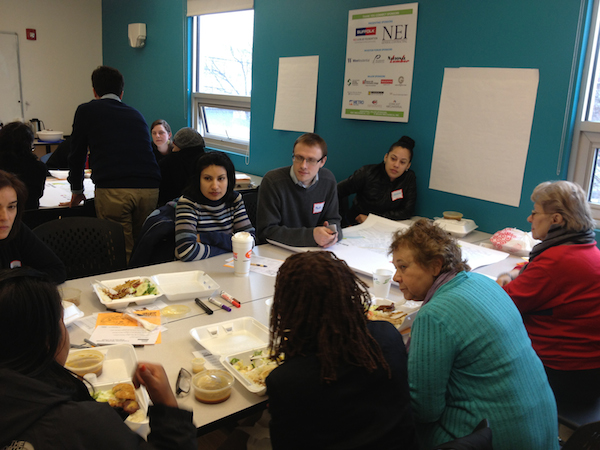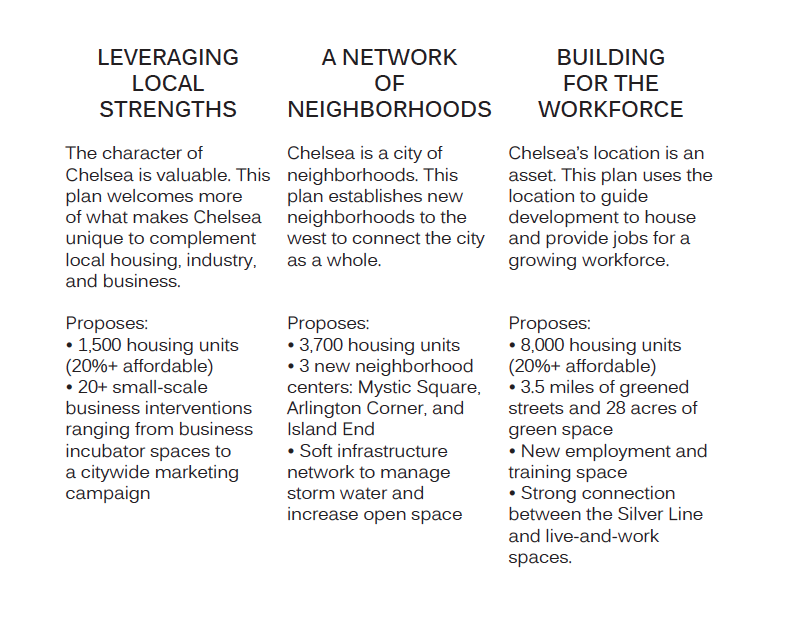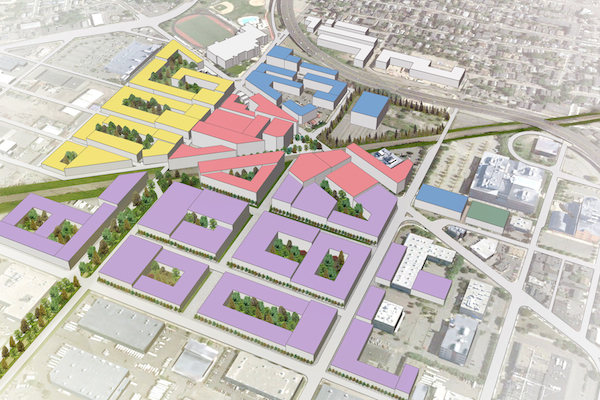Connect Chelsea: Three Visions for a Gateway City

Thirty-four members of the Second Semester Core Urban Planning Studio developed three planning alternatives for an urban renewal district in the western part of Chelsea, Massachusetts, a city of some 37,000 people across the Mystic River from Boston. As a diverse community with a significant immigrant population, Chelsea embodies the concept of a Gateway City. The city has long been an affordable and inclusive option for working-class people from various backgrounds. Now, due to the promise of a mass transit option—the MBTA’s Silver Line extension—and its proximity to Boston, Chelsea is becoming more and more attractive to middle class professionals.
The project was grounded in a significant engagement effort during which students reached out to more than 600 people who live, work, manage businesses, or otherwise spend time in Chelsea. Over a period of several months, the studio sought input through online platforms, written “intercept” surveys, in-person interviews, and group workshops. The diversity of techniques employed in this process helped to engage multiple sectors of the community, gather a rich set of information about complex topics, and raise general awareness about potential changes coming to Chelsea.
The three scenarios presented in the plan—Leveraging Local Strengths, A Network of Neighborhoods, and Building for the Workforce—reflect the multitude of perspectives on the future of Chelsea. Each presents a unified vision built around five topic areas: Housing, Economic Development, Transportation, Open Space, and Urban Design. The scenarios examine these topics from the neighborhood level, the city level, and the regional level. In doing so, they offer a wide range of possible interventions, ranging from low-cost, immediate recommendations to ambitious, large-scale development plans.
Instructors: Ann Forsyth, Dan D’Oca, Kathryn Madden
TAs: Charlie Brennan, Tim Czerwienski, Jennifer Lee, Lydia Scott


